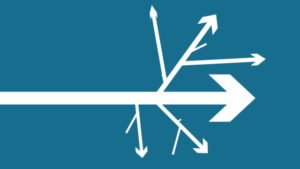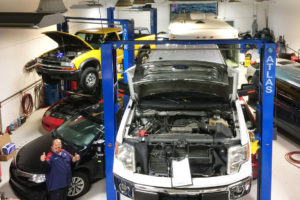No products in the cart.
All Posts
Ensuring You Have the Help You Need: Onsite Garage Equipment Repair Services vs. Remote Technical Support
If you’ve worked as a mechanic or shop owner for more than a little while, you realize that Murphy’s Law has a great deal to do with your day to day operations. If something can go wrong, it will, usually at the least opportune time. That’s particularly true when it comes to your shop equipment.
Everyday wear and tear will have an effect on equipment like vehicle lifts and A/C evac/recharge machines. Complete breakdowns are also possible. Of course, with your equipment out of commission, you’ll have a harder time serving your customers, and it’s important that you get back up and running as quickly as possible.
You should have access to help and support at these times, and the type of support provided should play a big role in your initial purchase decision. Two of the most common support types are onsite garage repair services and remote technical support. While both can be helpful, they’re not even a little bit similar, and they do not offer the same benefits.
Onsite Garage Equipment Repair Services
Onsite garage equipment repair services are exactly what they sound like. The service provider will send a technician or repair person to your shop, where they will analyze the problem, diagnose the issue and either provide a repair immediately, or order needed parts for a repair to be completed later. In this scenario, you have no responsibilities other than allowing the repair person onto your property when they arrive. The service provider will handle pretty much everything else.
Remote Technical Support
Again, the name pretty much says it all. Remote technical support is provided via the phone, or sometimes over video conferencing software like Skype. In most instances, you call the service provider, discuss the problem or symptoms you are experiencing with your equipment, and then you will be walked through a series of steps to help correct the problem or to determine the underlying cause of a breakdown or failure. In some instances, remote technical support providers can access electronic equipment to determine the nature of the issue on their site (such as with a diagnostic machine, which is basically a mobile computer).
When to Choose Each Type of Support

There are some obvious situations where each type of service described above would be beneficial. For instance, suppose your alignment computer were to go down for some reason. In this case, remote technical support would likely be the best option. The same thing applies if your diagnostic computer were to experience issues – remote technical support could walk you through troubleshooting steps, or you could connect it to the ethernet cable and let tech support log in and determine what’s going on.
Remote support isn’t so helpful for other situations, though. For instance, what happens when the motor powering the hydraulic unit on a vehicle lift dies? In this case, it’s better to have actual onsite garage equipment repair service that will send a technician to your shop, determine the fault, and replace the damaged part (even if that’s the motor) so you can get back to doing what you do best (working on your customers’ cars).
How to Determine the Support Type You Have
Not sure what sort of support you have available? The place to look will be the warranty information from the manufacturer. Note that you will likely not receive any sort of support from the distributor, supplier or retailer where you bought the equipment. All support comes from the manufacturer. Check your warranty documents – the support offered, how long it’s available, and other important information should be spelled out there.
In most instances, only very expensive equipment will come with onsite support, and even then, it will only be for a limited amount of time. One year of onsite support seems to be the norm. After that point, you have phone support available for an additional amount of time.
Should You Fix It Yourself?
In some instances, you might find that you can fix the issue yourself, or that someone in your shop knows what needs to be done. For instance, replacing a blown hydraulic line is not all that difficult. Should you go the DIY route in these instances? The answer is “it depends”.
If your piece of equipment comes with onsite support, then make use of it. You ultimately paid for that support in some way, even if it was rolled into the purchase price or the financing costs of the equipment. Get the most value from your purchase and let the manufacturer take care of the repairs in this instance.
If doing it yourself will void your warranty, that’s even more incentive to stay away from DIY solutions. Sure, you might know exactly what needs to be done to fix the problem, but if you void your warranty, that’s years of additional protection that you’re sacrificing. Of course, you may have little choice but to go the DIY route if remote support is your only option.
How Support Should Affect Your Purchase Decisions
As mentioned, onsite support is usually only offered on big purchases, and often only available with premium products. This should inform your purchase decisions. When something happens with your vehicle lift, will you have actual onsite support? When your shop’s air compressor fails, will you have a professional available to repair it? Or will you have to walk through the repair process yourself, guided by a remotely located support rep?
In addition to determining the level of support offered when making your equipment purchases, you also need to consider other factors. How long is support offered? Will you have remote phone support after the primary support period ends? Other factors to consider are the manufacturer’s reputation for durability and quality, which will have a definite impact on your ownership experience.
Ultimately, product support from the manufacturer is an important benefit, and is more than just a “perk”. Any time you spend trying to repair an issue on your own is less time you have for serving your customers, and is time that your shop is not making money.



